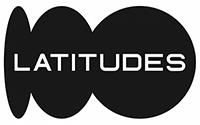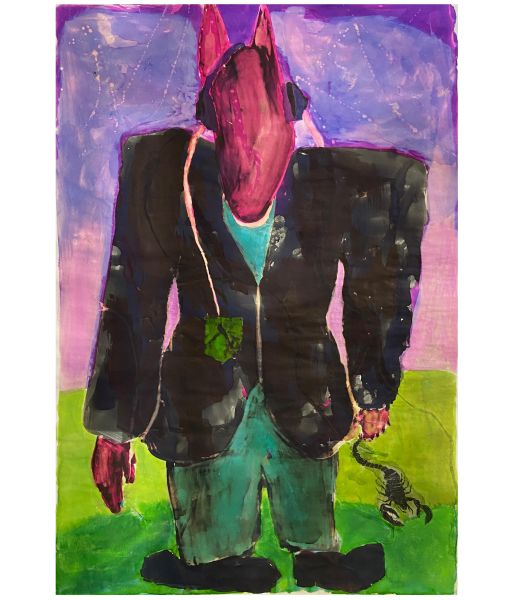Preppy Powers
Store Review (0)PRESENTED BY : Nel
| Edition Size | 0 |
|---|---|
| Medium | Ink and bleach 190 GSM fabriano paper |
| Height | 100.00 cm |
| Width | 140.00 cm |
| Artist | Robert Hamblin |
| Year | 2020 |
Hamblin's work is concerned with issues of queer masculinity as a transgender person. He transitioned from queer female in apartheid era South Africa to transgender male after the fall of the apartheid government. His perspectives of coming into white maleness in such a critical time is visited in his work.
Robert Hamblin (1969) is an artist, father and a gender activist born in Johannesburg South Africa. He lives and works in Cape Town. Hamblin’s paintings and photographic works have been exhibited in South Africa and internationally. The artist has received critical acclaim for his work that contributes to debates around the body politics of our time.
Hamblin's work is concerned with issues of queer masculinity as a transgender person. He transitioned from queer female in apartheid era South Africa to transgender male after the fall of the apartheid government. His perspectives of coming into white maleness in such a critical time is visited in his work.
He has no tertiary education other than his experiences in Apartheid era as a photojournalist, his subsequent work in South African theatre as a publicity photographer and thereafter twenty years of mentorship with 1952 Académie Ranson abstract painter Nel Erasmus.
Erasmus continually encouraged him to abandon photography in favour of the freedom of paint. This persuasion took twenty years only materialising in 2020.
During the twenty years he produced several bodies of fine art photography. His last body of photographic work was a seven year project with black transgender sex workers and culminated in a large solo exhibition at The Iziko South African National Gallery in Cape Town.
In the three following years he dedicated himself to writing a commissioned memoir that launched online earlier this month and at Nel gallery in Long Street in Cape Town on the 22nd of June.
“Writing a memoir is a very exposing exercise. One is confronted with the tenuous nature of memory and truth and forced to choose a single story line in one’s life that will feel succinct to a reader. This is a jarring process that made me long for the dualities that are able to exist in visual art practice. I landed in a cul de sac with my photography practice though. I found myself in the year of isolation - Covid 19."
In South Africa’s first major lockdown he started painting with inks belonging to his first grader daughter and experimenting with the effects of bleach on different kinds of inks. All of them had varying degrees of resilience to the oxidation and separation which the bleach imposes between the pigments and solubles of the inks.
"Every work started out as a drawing of myself. I tried to be compassionate in my attempts to understand my socially contested body. But the first year of work all seemed like I was just walking on a dangerously thin line with paper. I would create and destroy works until the paper could only barely hold the argument between the bleach and the ink. After completing the first body portrait that mirrored me in life like size, I picked it up and hung it over my arms to carry to a room where I could seal and light fix it. I looked down and saw the new fragility of the previously stiff and resistant Fabriano paper. The bodily interpretation of myself lay inside of this thin paper, the head slumped backwards over my wrist. The paper became another body that I needed to put down carefully so that it would not be damaged. I had created a system that compromised the paper and this facsimile of myself. I was deeply moved by what was in my arms. For the first time in my life it felt like the questions about my body and its meaning within the systems we live in as humans, had synchronised with my art practice. Since that moment the work has become more gentle and I am exploring aspects of the intersection of gender, body and meaning with charcoal, ink and a very occasional jab of bleach.”










